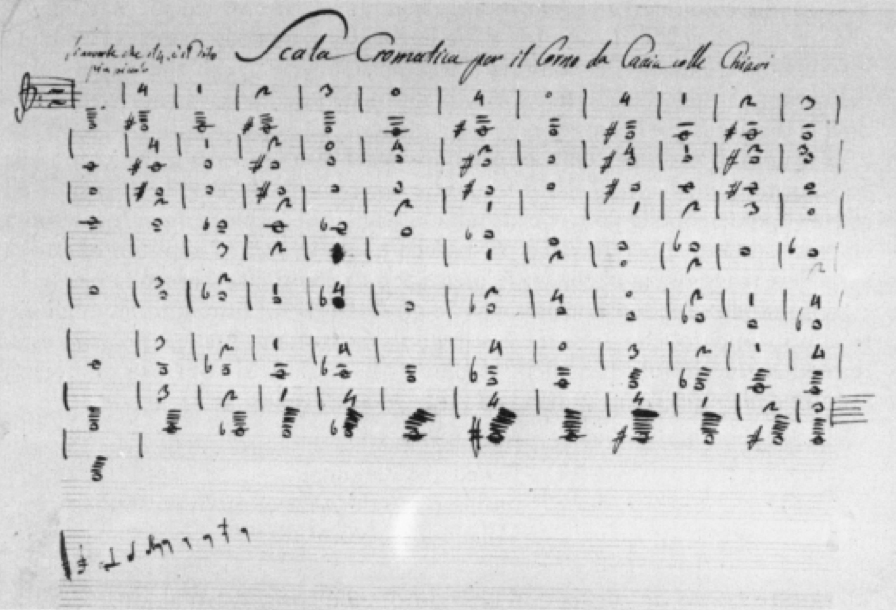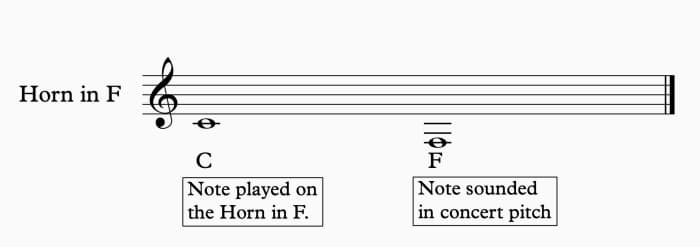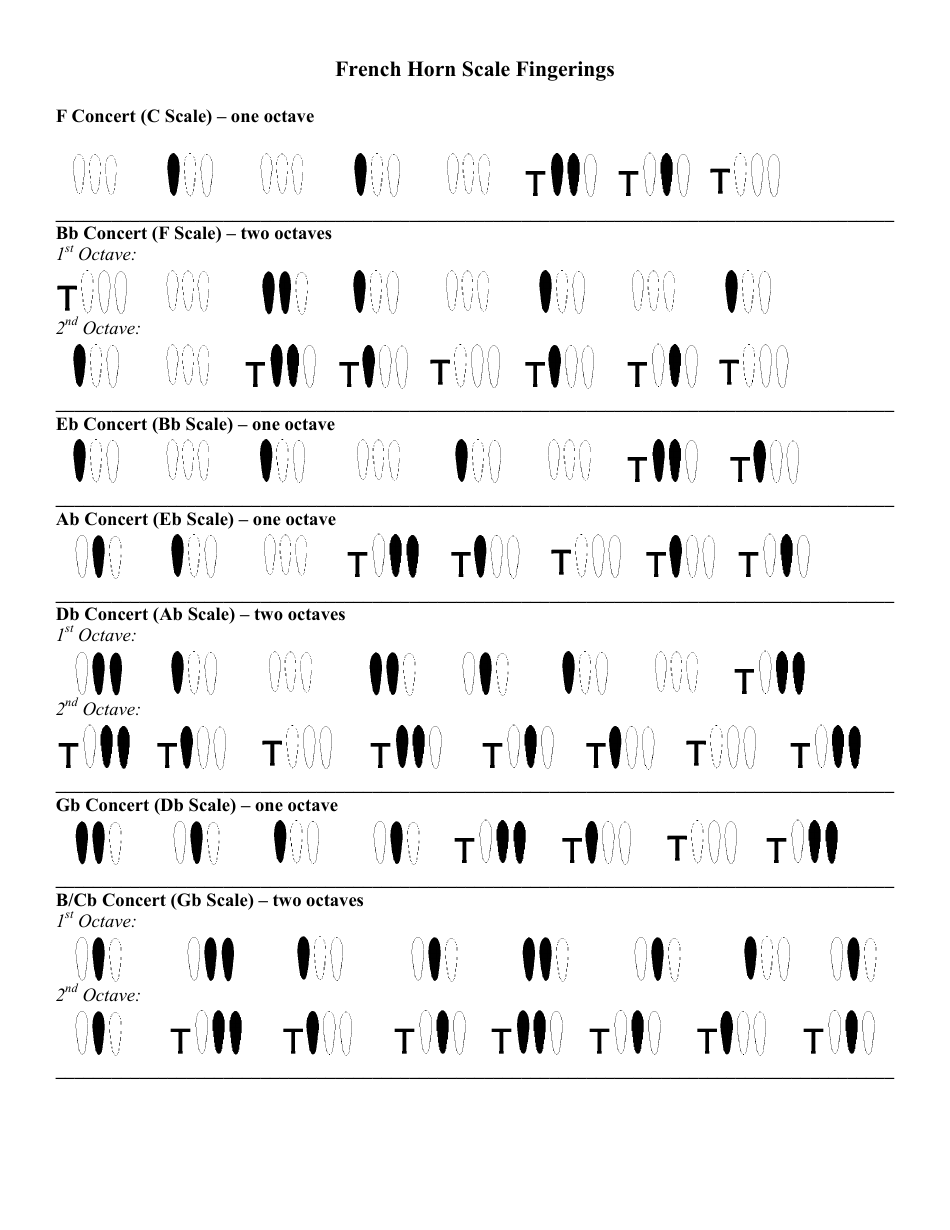

They are usually in the keys of F or B♭, although many F horns have longer slides to tune them to E♭, and almost all B♭ horns have a valve to put them in the key of A. This allows for simplicity of use and a much lighter weight.

Single horns use a single set of tubes connected to the valves. For example, a written C for horn in D must be transposed down a minor third and played as an A on F horn. A player with a modern instrument must provide the final transposition to the correct pitch.
#Art of french horn playing fingering chart series
For a player with a valveless horn that is a help, showing where in the harmonic series a particular note is. This practice began in the early days of the horn before valves, when the composer would indicate the key the horn should be in (horn in D, horn in C, etc.) and the part would be notated as if it were in C. Although the upper range of the horn repertoire rarely exceeds high C (two octaves above the horn's middle C, sounding F at the top of the treble clef), skilled players can achieve yet higher pitches.Īlso important to note is that many pieces from the Baroque to Romantic periods are written in keys other than F. This is the standard orchestral instrument and its valve combinations allow for the production of every chromatic tone from two octaves on either side of the horn's written middle-C (sounding F two octaves below the bass clef to F at the top of the treble clef). However, there is a great deal of music written beyond this range on the assumption that players are using a double horn in F/B♭. The standard range starting from a low F♯ is based on the characteristics of the single horn in F. The typical written ranges for the horn start at either the F♯ immediately below the bass clef or the C an octave below middle A. The limitations on the range of the instrument are primarily governed by the available valve combinations for the first four octaves of the overtone series and after that by the ability of the player to control the pitch through their air supply and embouchure. Today, music for the horn is typically written in F and sounds a perfect fifth lower than written. This configuration provides a high-range horn while avoiding the additional complexity and weight of a triple. Also common are decant doubles, which typically provide B♭ and Alto F branches. Triple horns with five valves are also made, tuned in F, B♭, and a descant E♭ or F. The more common double horn has a fourth valve, usually operated by the thumb, which routes the air to one set of tubing tuned to F or the second set of tubing tuned to B♭. Three valves control the flow of air in the single horn, which is tuned to F or less commonly, B♭. A horn without valves is known as a natural horn, changing pitch along the natural harmonics of the instrument (similar to a bugle), but with a wide range of notes due to the long tubing, coupled with a small mouthpiece, which causes the playable range of the horn to be higher in the harmonic series, where pitches are closer together. Most horns have lever-operated rotary valves, but some horns like the Vienna horn use piston valves (similar to trumpet valves). Horns have valves, operated with the left hand, to route the air into extra tubing to change the pitch.

French horn is still the most commonly used name for the instrument in the United States. Therefore, the International Horn Society has recommended since 1971 that the instrument be simply called the horn. However, this is technically incorrect since the instrument is not French in origin, but German. A musician who plays the horn is called a horn player (or less frequently, a hornist).ĭescended from the natural horn, the instrument is often informally known as the French horn. The horn is a brass instrument consisting of about 12–13 feet (3.7–4.0 m) of tubing wrapped into a coil with a flared bell.


 0 kommentar(er)
0 kommentar(er)
